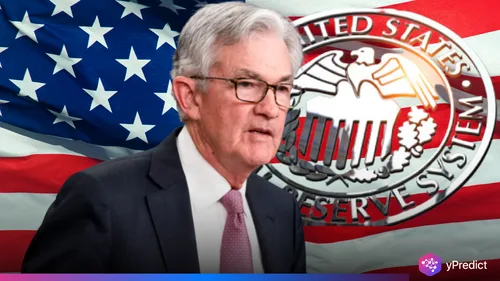
The US dollar (USD) is getting stronger as trade conflict tensions decrease, and the forex market is still rising. Investors are keeping watch on the US-China trade conflict and upcoming data, including initial jobless claims and durable goods orders. Central bank statements from both Europe and the U.S. also impact the market.
USD Holds Firm as Trade Talks Improve
Due to the US-China trade dispute being resolved, the USD remains stable after two days of gains. According to reports, the White House is considering ways to reduce tariffs on imports from China, which has caused stocks to rise broadly.
Treasury Secretary Scott Bessent’s comment that tariffs are “unsustainable” suggests room for negotiated relief. To maintain its position ahead of economic data, the USD index has been able to consolidate gains around 99.50.
The forex market saw sharp reactions from pairs like EUR/USD and GBP/USD in tandem with the stronger dollar. The euro fell nearly 1% before rebounding modestly on Thursday morning, ahead of key German IFO data. The pound marked a one-week low under 1.3250, despite a cautious recovery.
Andrew Bailey, governor of the Bank of England, spoke at the IMF conference. He raised expectations for future financial policy actions. During his remarks, he highlighted the threats that global disruptions pose to economic growth.
How Are Assets Reacting to Dollar Strength?
Gold faced substantial selling pressure, losing over 2.5% before rebounding to $3,320 on Thursday. The precious metal’s fall was driven by reduced demand as geopolitical fears subsided. However, technical buyers emerged at lower levels, helping prices recover.
In the equity markets, Wall Street saw strong gains following signs of trade de-escalation. This raised sentiment globally, although Thursday’s US futures suggested a minor pullback. An indication of investor confidence in the dollar was the USD index’s continued strong support. In the FX space, USD/JPY surged over 1% before easing back below 143.00, with attention turning to Tokyo’s CPI release for April.
Although the trade war has eased for the time being, it remains a wildcard. The resumption of tit-for-tat policies might trigger disruptions in supply chains, reduce global investment, and indirectly fuel consumer inflation. These all hold major implications for the forex market.
Forecasting Forex: What the Week Could Bring
As the market heads into the weekend, eyes are on the US economic releases. This release will give deeper insights into domestic demand and inflation pressure. The USD index’s short-term trend is probably going to be impacted by March’s durable goods orders and unemployment claims. Furthermore, the strength of the dollar will also be determined by future corporate earnings and PMI data.
Forex trends will be impacted by developments in the ongoing trade dispute between the US and China. Even though cooperative measures could make the USD stronger, volatility could arise from any signs of new tariffs or retaliatory measures. Market participants are advised to remain active, as both policy direction and data cues remain unpredictable.
Wrap-Up: Is the Forex Market Settling Now?
The forex market continues to be cautious and optimistic. Geopolitical tensions appear to be easing, which boosts risk sentiment and the USD index. However, the ongoing trade conflict may cause underlying volatility, which could keep investors on edge. Both traders and analysts must be flexible, as the market dynamics can shift quickly as the world changes.







